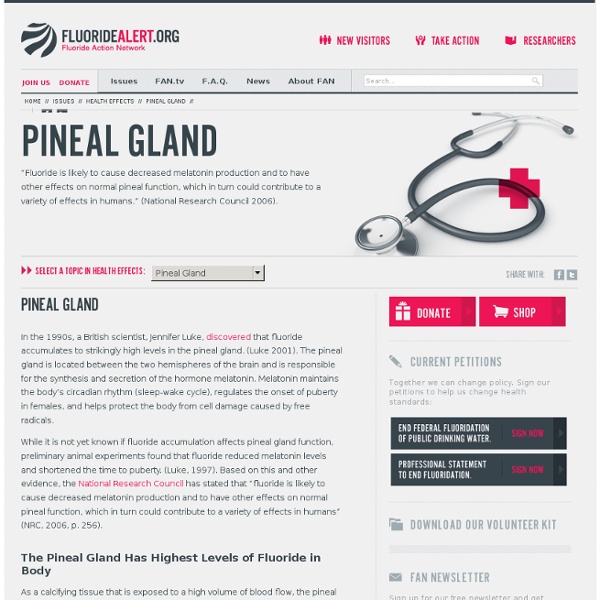



How to Detox Fluorides from Your Body (NaturalNews) You can rid you body of most fluorides with some easy natural remedies. Fluorides have been linked to a variety of severe chronic, even acute health issues. First a quick review summary of fluoride. Fluoride Toxicity Fluoride is a soluble salt, not a heavy metal. There are two basic types of fluoride. Sodium Fluoride is a synthetic waste product of the nuclear, aluminum, and phosphate fertilizer industries. It damages the liver and kidneys, weakens the immune system, possibly leading to cancer, creates symptoms that mimic fibromyalgia, and performs as a Trojan Horse to carry aluminum across the blood brain barrier. Another not commonly known organ victim of fluorosis is the pineal gland, located in the middle of the brain. Various permutations of Sodium Fluoride are also in many insecticides for homes and pesticides for crops. Avoiding Fluoride Contamination As always, the first step in detoxifying is to curb taking in toxins. So Now Let's Speed Up the Fluoride Detox Sources:
UNICEF - Official Position on Water Fluoridation Fluoride in water: An overview Throughout many parts of the world, high concentrations of fluoride occurring naturally in groundwater and coal have caused widespread fluorosis - a serious bone disease - among local populations. We purposely fluoridate a range of everyday products, notably toothpaste and drinking water, because for decades we have believed that fluoride in small doses has no adverse effects on health to offset its proven benefits in preventing dental decay. But more and more scientists are now seriously questioning the benefits of fluoride, even in small amounts. This paper gives a brief introduction to fluoride issues, particularly as they relate to the quality of drinking water. Basic facts about fluoride Fluoride exists fairly abundantly in the earth's crust and can enter groundwater by natural processes; the soil at the foot of mountains is particularly likely to be high in fluoride from the weathering and leaching of bedrock with a high fluoride content. Rainwater.